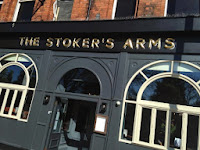A prime example of this was the selection of Dr Sarah Wollaston as Conservative candidate for Totnes in Devon at the 2010 General Election. Although the majorities have sometimes been slender, this seat has been won by the Conservatives at every election since 1923, so must be regarded as pretty safe. Since her election, she has been one of the most outspoken champions in the House of Commons of measures to restrict people’s lifestyle choices, being a strong advocate of minimum alcohol pricing and plain tobacco packaging, and most recently demanding government-dictated standard portion sizes for food as a means of combating obesity.
Many have even questioned what she is doing in the Conservative Party at all, as surely two of the key principles of modern-day conservatism must be encouraging individual responsibility and a scepticism about top-down State solutions to improve the human condition.
As Brendan O’Neill said in a recent speech to the annual dinner of the Free Society, this tendency isn’t just about imposing a few extra restrictions, it is challenging the entire foundation of the Enlightenment which has been the foundation of much Western political thought for over three hundred years.
What we’re really witnessing is the unravelling of the Enlightenment itself. The Enlightenment was based on the idea that individuals should be free to carve out their own moral and spiritual path in life without being hectored, harried or “corrected” by their rulers.The term is often too freely bandied about, but, as Simon Cooke explains, this genuinely is Health Fascism – the belief that individuals are not qualified to make sensible decisions for themselves and need to subordinate free choice to the higher purpose of the State.As John Locke said in his letter on toleration, one of the earliest documents of the Enlightenment, “The care of souls does not belong to the [state]… every man’s soul belongs unto himself and is to be left unto himself.
This is the real fight we have on our hands today – not a fight against a bunch of annoying nannies, but a fight against the attempted colonisation of our souls by a state which thinks, wrongly, that it knows better than we do ourselves how our lives should be run.
Which is why the term 'health fascist' is entirely appropriate to describe Dr Wollaston's position. The central tenet of fascism is that the state has a duty to change men so they serve the wider purpose of the nation - we are subservient to the needs of that state because it understands what is necessary to build the right kind of society. So it is with the 'duty to intervene' - people ordering 'supersized' boxes of popcorn are not merely damaging themselves, they also damage society by placing a 'cost' on us all. Such practices are decadent with the sin compounded by the suggestion that someone profits from making people eat larger portions.Let us hope at next year’s General Election someone (probably UKIP) puts up a candidate against this dreadful woman who is prepared to place a lot of emphasis on lifestyle issues.So to put this right government has that 'duty to intervene'. The wider interests of society - defined with the term 'obesity epidemic' - are served by banning a person from entering freely into a contract with another person because the state has decided that large servings of fizzy-pop and popcorn are unhealthy.
This rejection of choice in a free society because of associated 'health risks' or the 'normalisation' of some proscribed behaviour represents a degree of control and a justification on the basis of wider society's 'interests' that can only be described as fascist. Yet this health fascism - the view that bans and controls are needed because of the 'cost to society' - has become ever more common. That we are weak and make poor choices is undeniable and society should help us to deal with these problems but this does not justify saying that I cannot be allowed the option of a 'poor' choice. The former is good government, that latter health fascism.
























